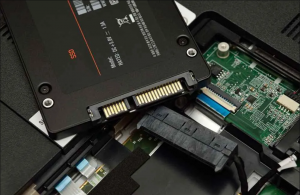What is a Solid State Drive?
The world of SSD’s (Solid State Drives) can be confusing for the average user as there are now so many different types of SSD. They are storage devices similar to hard drives but instead of spinning disks they use small chips known as “Nand flash” similar to the chips that can be found on a USB flash drive. They can be connected in so many different ways from good old SATA transfer used in traditional spinning disk hard-drives (HDD) that you may be familiar with to the much newer M.2 connecters used in most modern business computers and laptops.

What’s the difference between SSDs?
The main difference to be aware of is the speed difference between the connectors. Your SATA SSD looks similar to your average 2.5″ HDD and is generally much faster with speeds of up to 560mb/s (megabytes per second) this is 5.6x faster than a spinning disk hard-drive. Your average M.2 drive that makes use of the NVME protocol can reach speeds of up to 3600mb/s which is 36x faster than a hard-drive. Businesses that need even faster speeds can pick a top of the range M.2 drive which can reach up to 10,000 mb/s. This is 100x faster than a hard-drive, talk about speedy!
Are there any downsides to SSDs?
The main drawback would be that SSD’s are generally slightly more expensive per gigabyte of storage than a hard-drive however they make up for this in sheer reliability and performance and they are much less likely to suffer from physical damage. This makes them more suited for use in laptops and where speed is a priority.
What to do if you feel you could benefit from an upgrade to an SSD?
If you feel like your business could benefit from upgrading your business systems to brand new devices containing SSD’s or if you just want to refresh your existing systems and get a much needed performance boost, please get in touch and we can arrange an upgrade, because we make IT happen.
![]()
![]()
![]()

